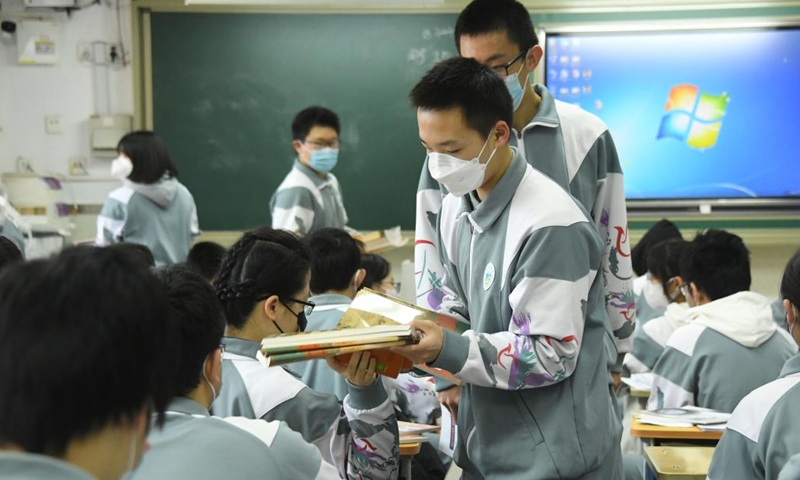Influenza A on the rise in Beijing but no cluster COVID infections found: official monitoring

Students deliver teaching materials on their first day of the new semester at a senior high school in Beijing, capital of China, Feb. 13, 2023. Primary and middle school students in Beijing returned to school for the spring semester on Monday.(Photo: Xinhua)
Seasonal flu cases in Beijing from February 13-19 increased 91 percent from the previous week, but were lower than that of 2022 and previous pre-COVID years, while no cluster COVID infections were found, according to the Beijing Center for Disease Prevention and Control on Wednesday.About 23 percent of people with symptoms tested positive for the flu, a sheer spike from previous week's 4 percent. Although this was an 18 percent drop from the same period in 2022 and 61 percent fall from 2019 levels.
The influenza A virus has become dominant, with the H1N1 sub strain accounting for 64 percent and H3N2 sub strain accounting for 35 percent.
Since February, there have been clusters of fever, which are caused by flu or norovirus. Most of these clusters have been detected in school or kindergarten settings. But the overall norovirus prevalence remains at a stable low level.
In addition to personal protection measures such as wearing masks following a positive test, the disease control authority advised schools and kindergartens to enhance health monitoring. Students showing fever, cough, vomiting and diarrhea are advised to stay at home, and more preventative measures could be applied if a cluster infection is detected.
As the new semester starts, multiple Chinese cities have reported suspension of in-person classes due to cluster fever cases, prompting concerns over the return of COVID. But experts reassured the public that they could more likely be caused by other viruses or students' sudden change of schedule.
The sharp rise in temperatures, the gathering of students and higher risks of cross-infection, and some children not adapting to school schedule after holidays have jointly contributed to a lower immunity and higher chance of diseases, experts noted.
Global Times


